An embroidered banner, made in the style of a 15th century processional banner.
For many years, I have been involved in the Worshipful Company of Broderers of Lochac and I thought that the Company should have a rich banner to mark our presence in court during presentations, for procession at Guild events and on other such occasions requiring suitable panoply.
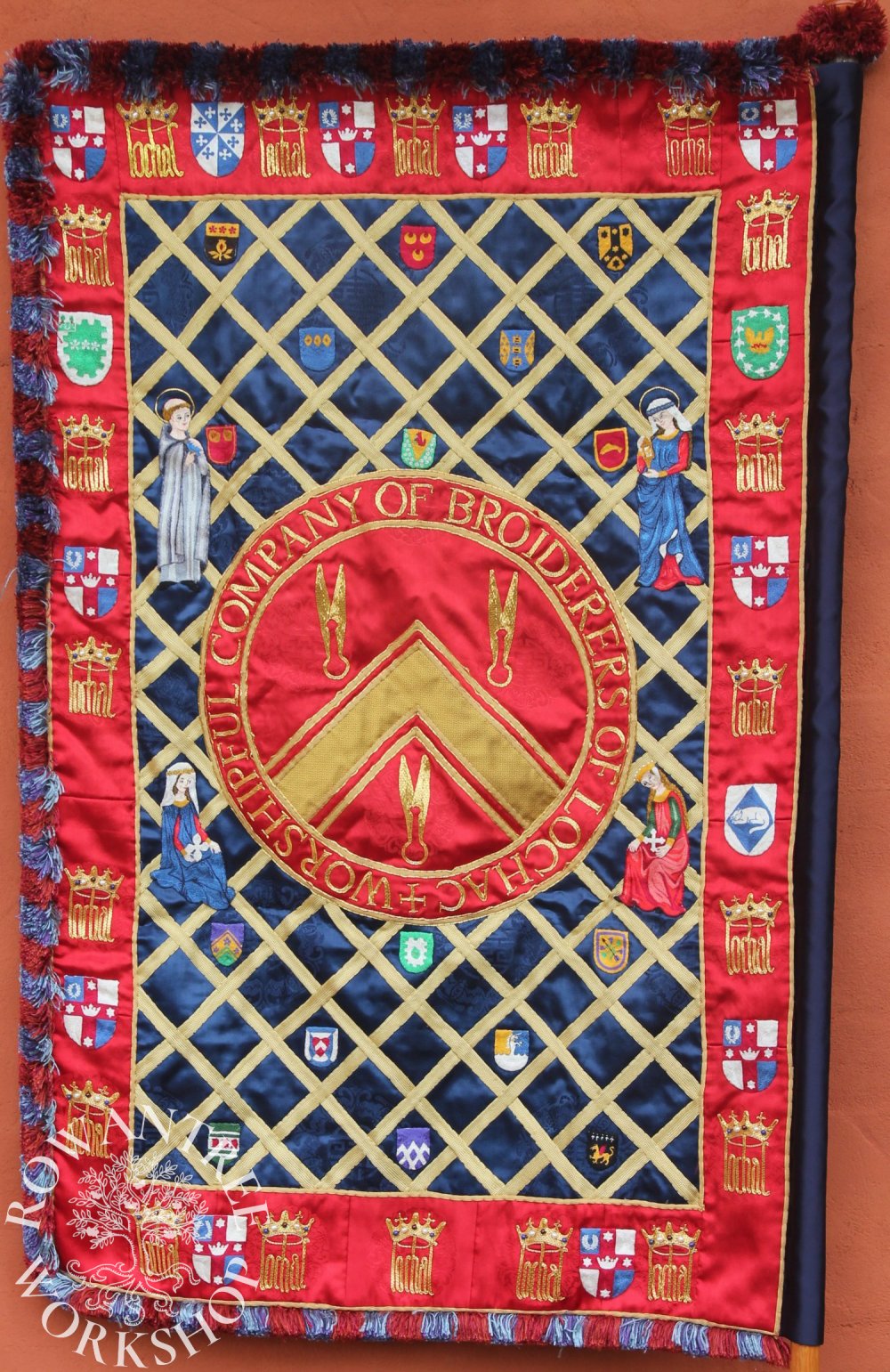
Although I did the research, design and construction, the embroidery was a group project, with many contributors.
Research and Design
Medieval banners could be made by painting a design onto whole cloth, as described by Cennini in his 15th century handbook Il Libro dell’Arte (Cennini 1993). Banners could also be sewn together from dyed cloth, as detailed in the 16th century Austrian tailors manuals (Barich & McNealy 2015). But banners used for processions were often highly ornate and made from rich textiles.
This banner is inspired by a 15th century Milanese example depicted in Heraldry Sources Symbols and Meanings (Neubecker, 1997). Although this image is a painting, it it clear that the banner is made using rich materials, fringing, goldwork and other embroidery – not simply painted onto cloth.
Other contemporary examples of processional banners also show the use of rich fabrics, appliqué, goldwork and many other embroidery techniques (even as black and white images).

Source: Bildindex
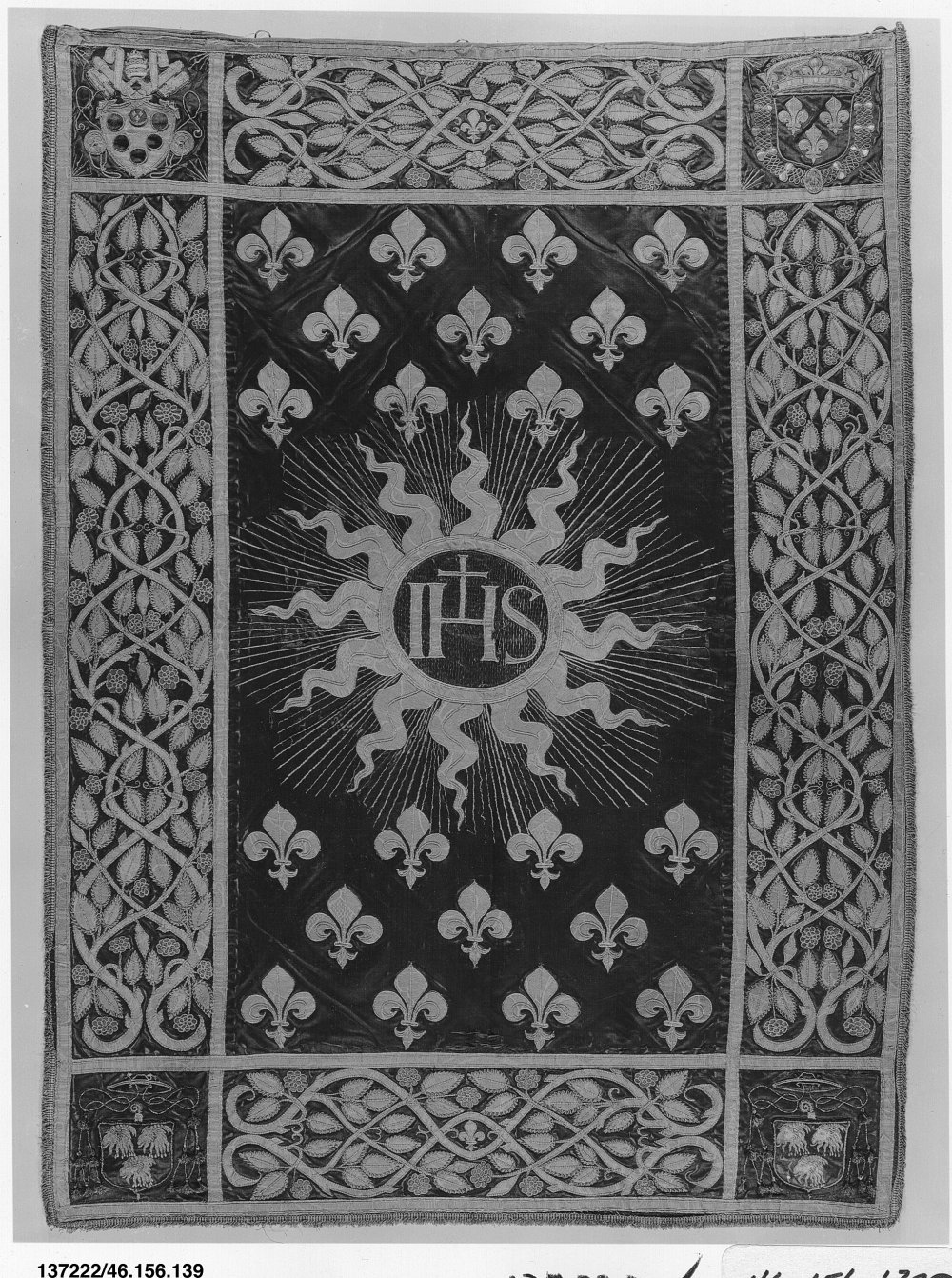
The Milanese banner had many elements that were easy to adapt to my purpose. The centre rondel has been appropriated for the badge of the Company, with the replaced by the Company name. The four women supporters are replaced by two patron saints of embroidery and our two founders. I drew these based on
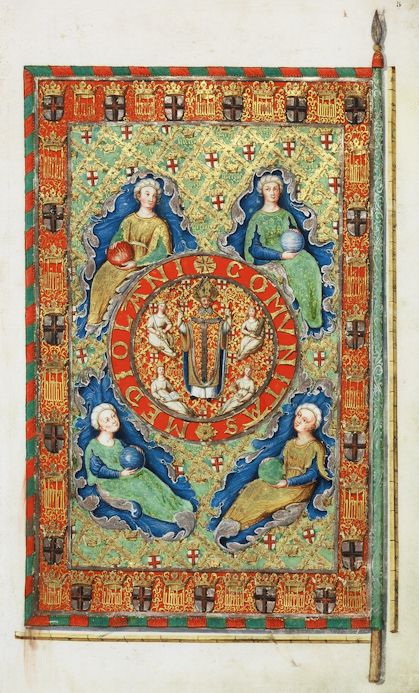
Source: Wikipedia

Some needed very little change – the background devices become the devices of the members of the Company of apprentice and journeyman rank; the border devices become the devices of our Masters ; and the crowned “Libertas” of the Italian free states has become the crowned “Lochac”.

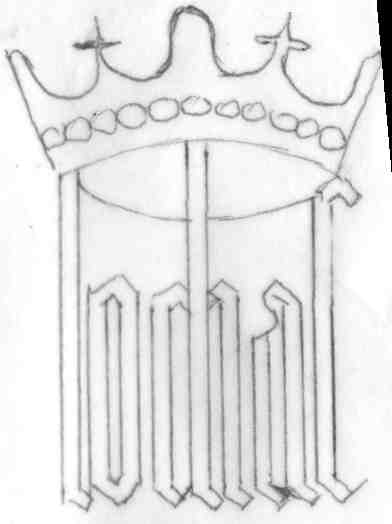
Construction
Because this was to be a group project, it needed to be worked in many pieces and then assembled. I created 60 kits for the different pieces, each with detailed instructions and materials:
- 20 Lochac crowned – couched gold jap and twist, on a red silk ground
- 16 Lochac device – silk splitstitch on white silk
- 4 Master’s device – silk splitstitch on white silk
- 20 Personal device – silk splitstitch on white silk
- 4 supporters – silk splitstitch on white silk.
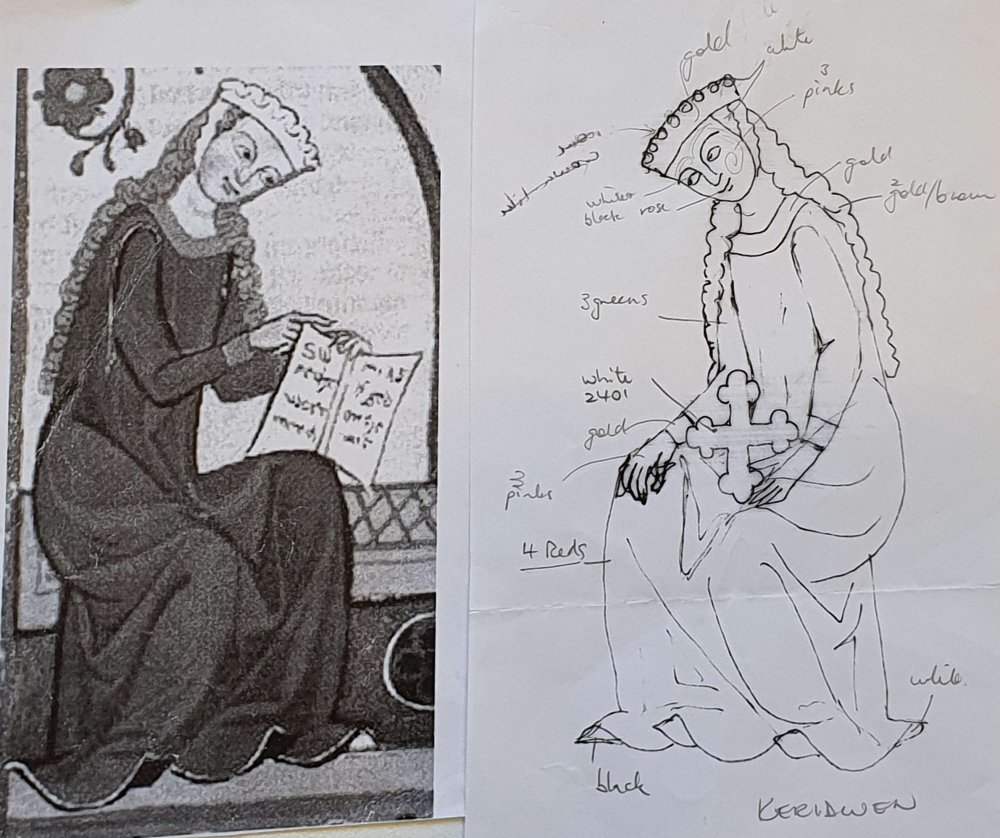
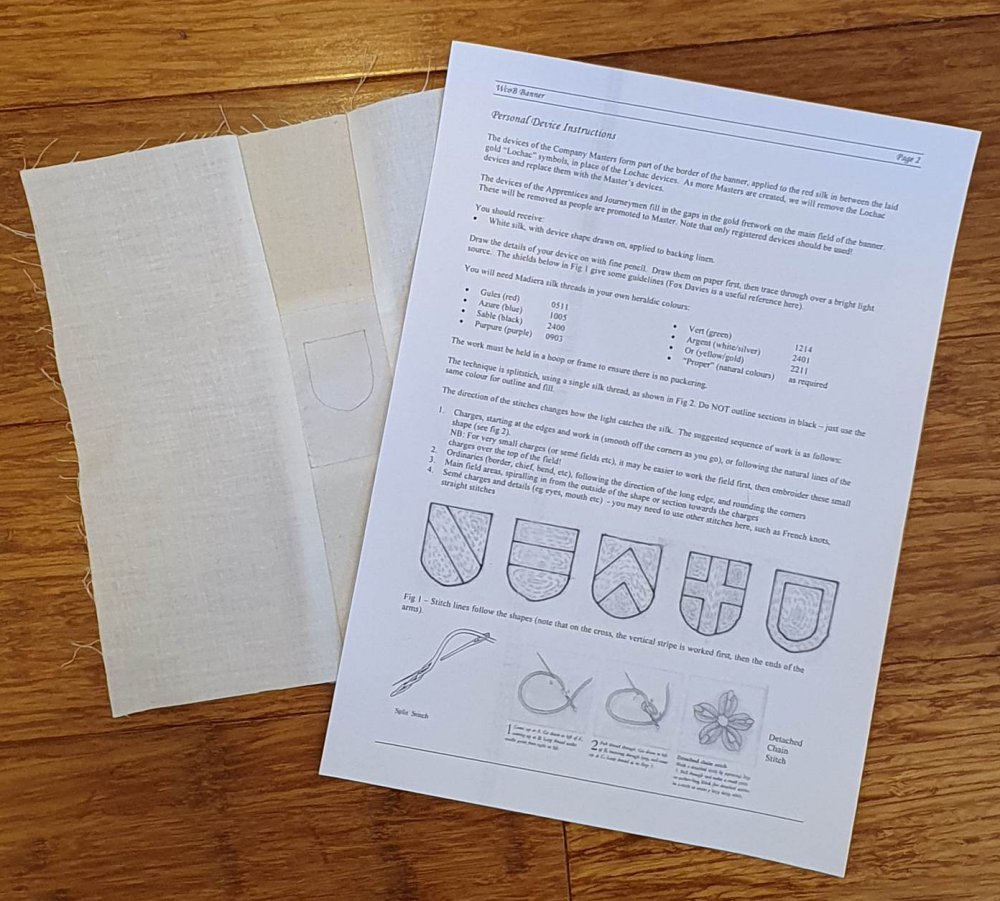
While these pieces were being completed, I worked the central rondel in couched gold on red silk, with a chevron of gold silk appliqué. I embellished the blue silk background with a fretwork of gold braid, then added the central rondel with an edge of braid and gold jap.
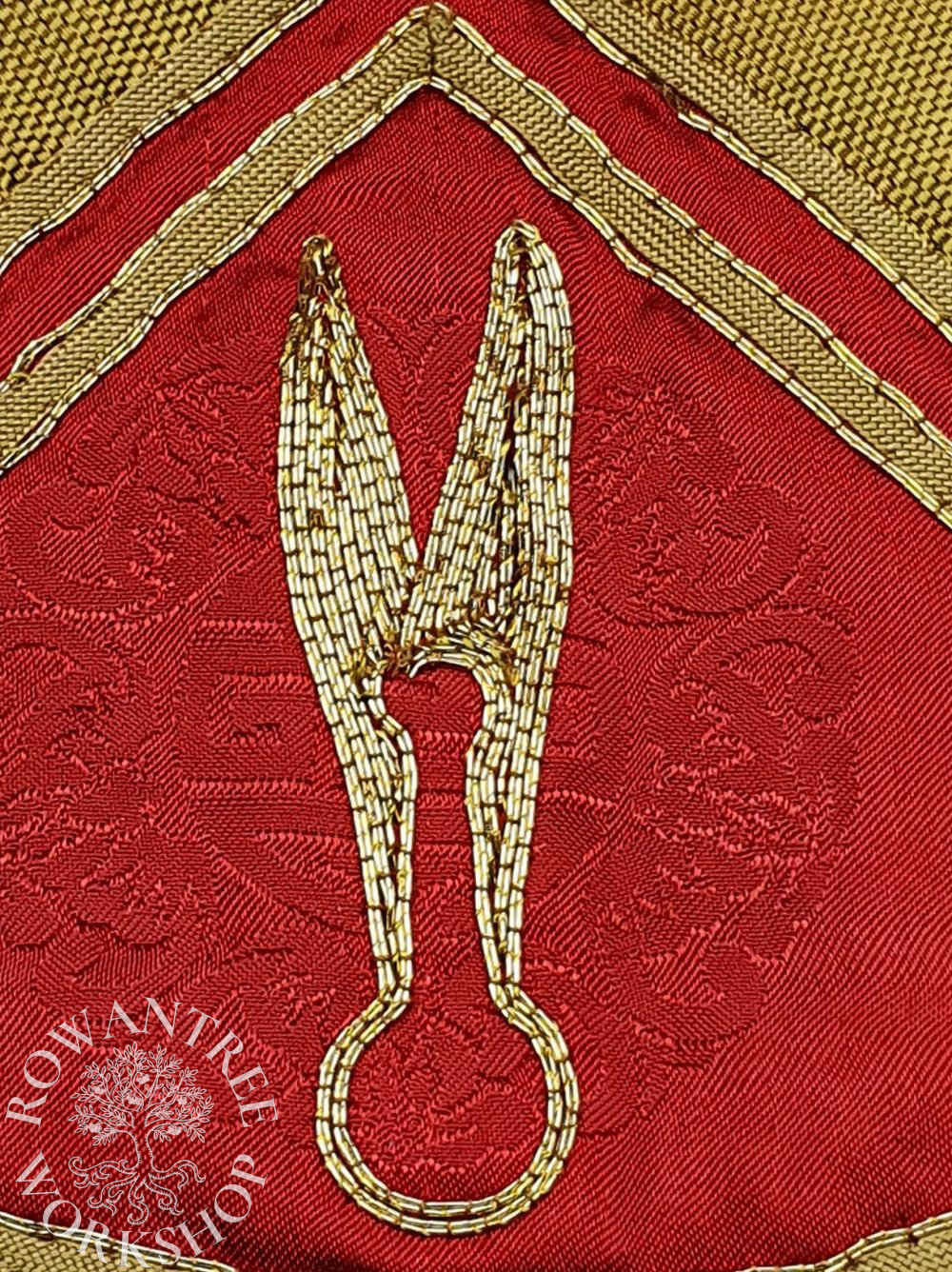
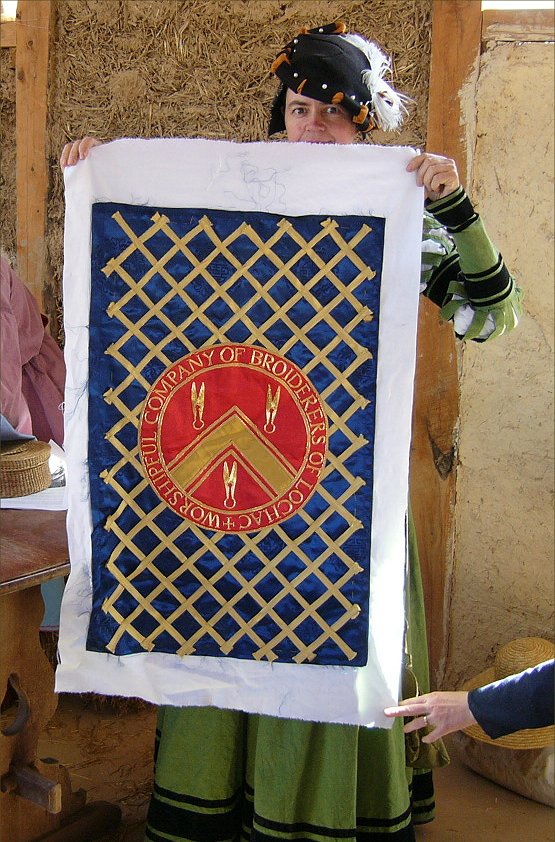
I also worked one of the Lochac gold pieces, and my own device (shown below).
The majority of the pieces were returned by 2007, but the banner could not be constructed until all the goldwork edge pieces were completed. A second round of kits was sent out in 2008 and a full set of edge pieces were finally returned by January 2009.
Once I had all the critical pieces, I could assemble the banner. I sewed the red silk edges together, then sewed these to the blue silk ground, edging with a line of applied braid, then adding freshwater pearls, lapis and garnet beads. I appliquéd the Lochac and Masters devices over the joins to complete the edge.


On the main banner, I appliquéd the four supporters and added embellishments in couched gold, pearls and spangles. Then I appliquéd the devices of the individual members of the Company.
Finally, I added a row of rich blue and red upholstery fringing, a pocket for the pole, and a lining of red silk, left over from the Pelican Cloak project – hooked at the base, so I could add more devices in future. The finished banner is approximately 60cm wide x 1m high.
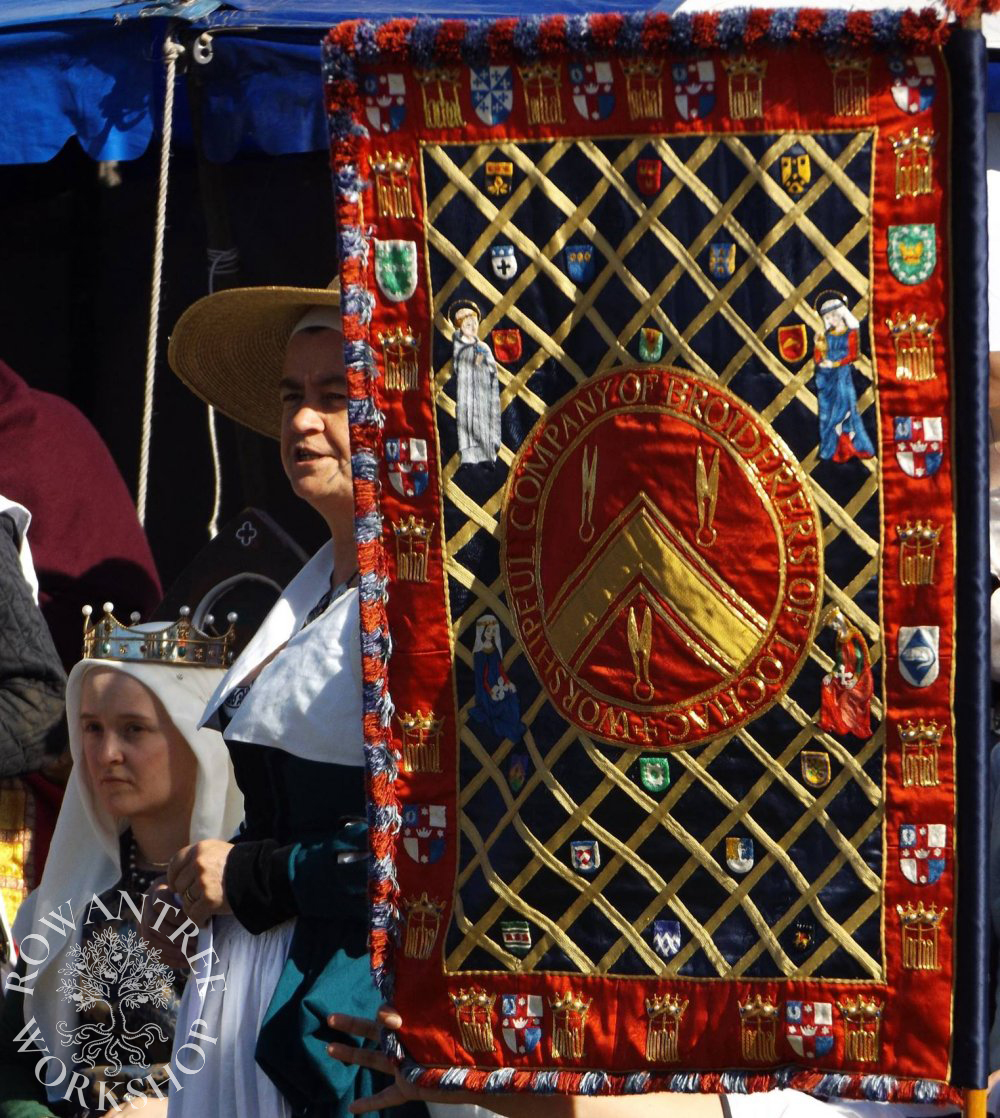
Afterword
The banner remains a work-in-progress, with new devices added as members complete them.
You can see more details about this project and pictures of all the elements on the WCoB website.

